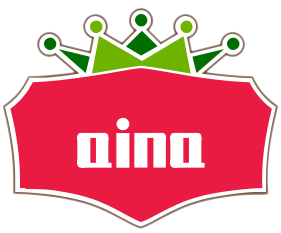Internet of People network (IoPn,IoP) is a decentralized, open-source technology infrastructure designed to create a peer-to-peer network that hosts people’s profiles, reputation, and identity information without relying on centralized servers or intermediaries.
It aims to enable direct device-to-device communication and people-to-people or company-to-people interactions while preserving privacy and eliminating middlemen.
What is IoPn?
Decentralized social graph:
IoP builds an open social graph where each person’s profile is identified by a public key and linked to others through relationship proofs, forming a global map of people and their connections.
Open infrastructure:
Developers can innovate freely in a permission-less way, creating applications that interact directly over the IoPn network.
Privacy and security:
By enabling direct device-to-device communication without central servers, IoPn protects user data from breaches or misuse, ensuring users control their information.
Native token:
IoPn incorporates a native cryptocurrency (IoP token or LFi token) used as an incentive and payment medium within the network.
How does IoPn work?
Peer-to-peer networks: IoPn consists of interconnected P2P networks with different node types that organize themselves by topology, location, or latency to optimize communication.
Graphchain: The system stores profiles (nodes) and their relationships (edges) on a blockchain-based graphchain. Relationships require cryptographic signatures from both parties, ensuring authenticity.
Content Address Network (CAN): An extension of IPFS, CAN indexes and stores profile and reputation data in a decentralized way, with immutable keys for content retrieval.
Blockchain token server: Uses a Bitcoin-based blockchain with Proof of Work and Proof of Stake consensus mechanisms, secured by SHA256 hashing, to manage transactions and token distribution[5][6].
How to participate in IoPn airdrop?
Own an xLFi Minter: Participation in the IoPn ecosystem and its airdrops typically requires owning an xLFi Minter device or software, which allows you to mine or earn IoPn tokens.
Community involvement: Since IoPn is open-source and permission-less, engaging with the community, running nodes, or developing applications can also be ways to participate and earn tokens.
Stay updated: Airdrops and token distributions are announced through official IoPn or Fermat project channels, so following their social media or websites is essential.
Note: Specific details about current airdrop events, eligibility, and claiming procedures can vary and should be confirmed from official IoPn sources or communities.
Technical details summary
| Aspect | Details |
| Network type | Decentralized peer-to-peer networks with multiple node topologies (unstructured, location-based, latency-based) |
| Data structure | Graphchain storing nodes (profiles) and edges (relationships) with cryptographic signatures |
| Consensus | Combination of Proof of Work and Proof of Stake using SHA256 hashing |
| Content storage | Content Address Network (CAN) based on IPFS with immutable naming system |
| Token | IoPn native token (LFi) used for incentives and payments |
| Communication | Direct device-to-device (peer-to-peer) without central servers |
| Developer access | Open and permission-less for innovation |
What is the Internet of Things (IoT)?
IoT refers to the network of physical devices (“things”) embedded with sensors, software, and connectivity to collect and exchange data.
Examples include smart thermostats, connected appliances, industrial sensors, and wearable devices.
Its primary focus is on machine-to-machine (M2M) communication, automating processes, and enabling devices to interact without human intervention.
IoT improves efficiency, monitoring, and automation across industries and homes.
Key Differences Between IoPn and IoT
| Aspect | Internet of People network (IoPn) | Internet of Things (IoT) |
| Core Focus | People, human interactions, social connections, and experiences | Physical devices and sensors communicating autonomously |
| Primary Communication | People-to-People (P2P), People-to-Machine (P2M), social data | Machine-to-Machine (M2M) |
| Purpose | Enhance human communication, collaboration, privacy, and control over personal data | Automate processes, collect sensor data, improve efficiency |
| Data Emphasis | Human behavior, intent, relationships, and sentiment | Sensor data, device status, environmental data |
| Technology Use | AI, decentralization, blockchain, immersive experiences | Embedded sensors, cloud computing, networking protocols |
| Examples | Social networks, decentralized identity systems, personal data control platforms | Smart homes, industrial automation, connected vehicles |
Summary
The Internet of People network (IoPn) is a blockchain-based decentralized social network infrastructure that empowers users with control over their identity and data, enabling secure, private, and direct interactions without intermediaries.
It leverages advanced peer-to-peer networking, cryptographic proofs, and blockchain token economics to build a new paradigm for online social and business interactions.
Participation involves owning mining devices or engaging with the network and following official channels for token airdrops and updates.

